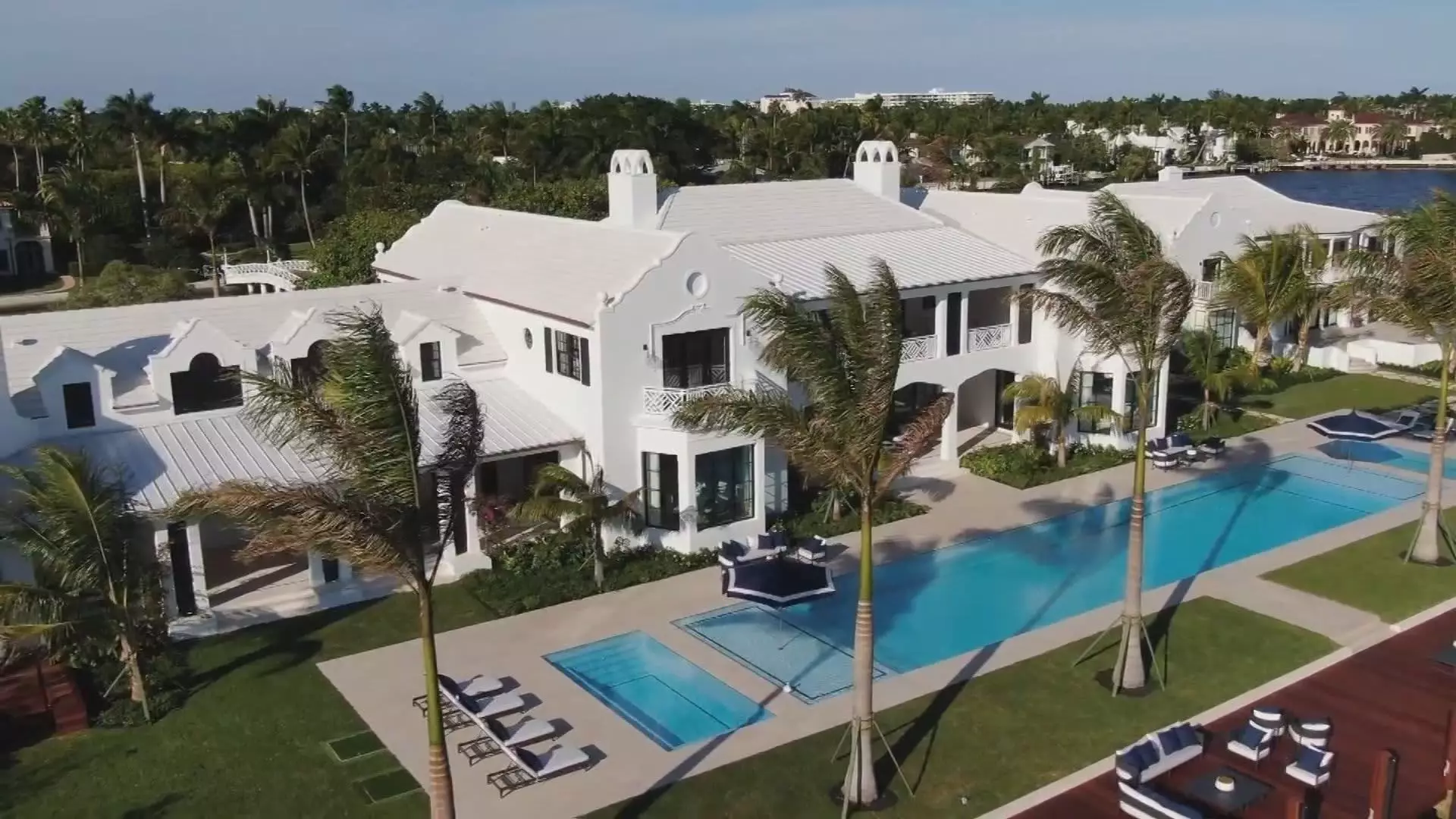The luxury real estate market, particularly in regions like New York, Miami, and Palm Beach, has exhibited a remarkable surge in sales, setting new records in a time when many other global markets are experiencing declines. A recent report from Knight Frank revealed that the number of transactions for homes costing $10 million or more increased dramatically during the second quarter of the year. Palm Beach saw a staggering 44% increase, Miami reported a 27% rise, and New York experienced a solid 16% growth. This surge is not merely a statistical anomaly; it underscores a profound stability in specific luxury sectors amidst broader economic uncertainties.
In New York, a historic peak was reached with 72 transactions above the $10 million mark, noting a significant rebound over the last two years. Miami followed closely with 55 sales, while Los Angeles and Palm Beach with 42 and 36 sales respectively, highlighted just how competitive the luxury market has become in these regions.
Contrarily, Los Angeles faced a notable decline in ultra-luxury transactions, dropping by 29%. This downturn can largely be attributed to the introduction of a new “mansion tax,” a 5.5% tax imposed on homes sold for over $10 million. This piece of legislation serves as a cautionary tale about how local policies can directly influence the luxury market. While tax measures are often aimed at generating revenue, they can have unintended consequences, such as deterring ultra-wealthy buyers from investing in specific markets.
The fallout from this tax has resulted in fewer transactions, prompting luxury sellers to reconsider pricing strategies. High-end properties require a delicate balance between pricing and perceived value, especially when conventional wealth indicators fluctuate.
The ultra-luxury segment is not just about the volume of sales; it’s also about the record-setting deals that punctuate these transactions. The quarter witnessed some monumental sales figures, including a $150 million acquisition of a private island in Palm Beach, purchased by Australian investor Michael Dorrell. Additionally, both a historical 3.2-acre estate in Palm Beach selling for $148 million and a luxurious Manhattan penthouse transaction at $135 million exemplify the magnitude of deals within this niche. These sales not only signal the affluent buyers’ willingness to spend but also the continued appeal of rare, trophy properties.
Market activity in these elite sectors shows that the appetite for high-value properties remains strong despite economic pressures. The growing wealth among the elite has been a major driver of this ongoing demand.
While certain markets are thriving, the overall global perspective reveals a more mixed narrative. Knight Frank reported that on a global scale, sales of homes costing over $10 million saw a slight decrease of 4%, totaling approximately $8.5 billion. Interestingly, Dubai stands out as a hotspot for ultra-luxury real estate, with an impressive 85 sales in the second quarter. The city’s favorable tax arrangements and regulatory changes have attracted a new wave of ultra-wealthy individuals from diverse regions, thereby bolstering its status as a central hub for luxury living.
In stark contrast, London exhibited one of the most significant drops, with a 47% decline in ultra-high-end transactions. The apprehension surrounding potential tax hikes for the wealthy in the U.K. has raised concerns among high-net-worth individuals, prompting them to reassess their investments in the British capital.
Despite the cooling off in some areas and the mixed global sentiment, there’s optimism for the remainder of the year, particularly as interest rates are expected to remain low. Historically, the ultra-luxury market has been less sensitive to interest rate fluctuations due to the propensity for buyers to leverage cash for purchases. However, lower rates could drive more transactions, enhancing market liquidity.
As we look ahead, experts predict that total transaction volumes are likely to increase into 2025. The dynamics of the luxury real estate market continue to evolve, driven by economic factors, regulatory frameworks, and the ever-changing landscape of wealth accumulation. Those considering investing in ultra-luxury properties would do well to stay attuned to both local and global trends that ultimately shape this unique market landscape.

